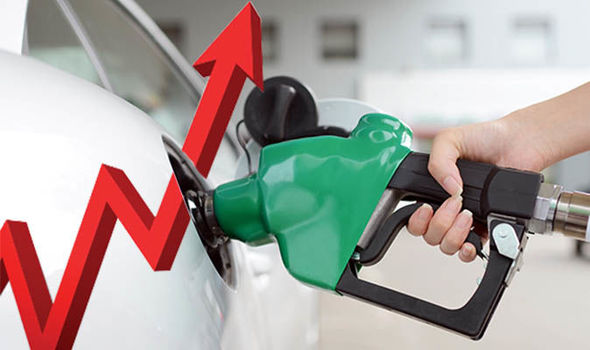Petrol Prices in Pakistan: Dynamics, Challenges, and Impacts
The price of petrol in Pakistan is a topic of constant public concern, reflecting its pervasive impact on the economy and the daily lives of millions. As a developing country with significant economic vulnerabilities, Pakistan faces unique challenges in managing fuel prices, which are influenced by a complex interplay of international markets, government policies, and local economic dynamics. This article examines the factors affecting petrol prices in Pakistan, the implications of price fluctuations, and the potential solutions to stabilize this critical aspect of the economy.
Understanding the Dynamics of Petrol Pricing
Petrol prices in Pakistan are determined by several interconnected factors, both domestic and international. At its core, the price is influenced by crude oil rates in global markets, the exchange rate of the Pakistani rupee against the US dollar, taxes and levies imposed by the government, and the operational efficiency of domestic refineries and distribution systems.
- Global Oil Prices: Pakistan is a net importer of crude oil and petroleum products, which makes it highly susceptible to fluctuations in global oil prices. International oil prices are influenced by factors such as geopolitical tensions, OPEC production quotas, and shifts in global demand. For example, during periods of global economic growth, oil demand typically rises, pushing up prices. Conversely, during crises such as the COVID-19 pandemic, prices may fall due to reduced demand. These fluctuations directly impact Pakistan’s petrol costs.
- Exchange Rate Volatility: Since crude oil imports are priced in US dollars, the value of the Pakistani rupee plays a crucial role in determining local petrol prices. Depreciation of the rupee against the dollar increases the cost of imports, which is then passed on to consumers. Pakistan’s persistent balance of payments issues have exacerbated currency instability, contributing to frequent petrol price adjustments.
- Government Taxes and Levies: The government imposes a range of taxes and duties on petroleum products, including the General Sales Tax (GST) and the Petroleum Development Levy (PDL). These taxes are significant revenue sources for the state but also add a substantial burden to end-users. For example, during fiscal constraints, the government may increase these levies to bridge budget deficits, resulting in higher petrol prices.
- Refining and Distribution Costs: Domestic factors, including the efficiency of oil refineries and the cost of transporting fuel across the country, also play a role. Inefficiencies in these systems can lead to higher costs that are eventually borne by consumers.
Challenges and Impacts of Rising Petrol Prices
The consistent increase in petrol prices has far-reaching effects on Pakistan’s economy and society. These challenges are multi-dimensional, affecting inflation, business operations, and social stability.
- Economic Inflation: Petrol is a fundamental input for transportation and energy. Any increase in petrol prices triggers a domino effect on the prices of goods and services, particularly those reliant on transport. The agriculture sector, which depends heavily on fuel for machinery and logistics, faces increased costs, leading to higher food prices. This fuels overall inflation, eroding the purchasing power of consumers and disproportionately impacting low-income households.
- Impact on Businesses: Rising fuel costs increase operating expenses for businesses, particularly those in transportation, logistics, and manufacturing. Small and medium-sized enterprises (SMEs), which form the backbone of Pakistan’s economy, are particularly vulnerable as they often lack the financial cushion to absorb such shocks. This can result in reduced profitability, job losses, and slower economic growth.
- Burden on Households: For ordinary citizens, higher petrol prices mean increased expenses on commuting, heating, and cooking, especially in rural areas where alternative energy sources are limited. This financial strain can lead to reduced spending on other essentials such as education and healthcare, deepening the cycle of poverty.
- Political Unrest and Public Discontent: In a country where a significant portion of the population lives below the poverty line, steep increases in petrol prices often lead to public protests and political unrest. Governments are frequently caught in a dilemma: balancing fiscal needs with the socio-political repercussions of fuel price hikes.
- Energy Crisis and Dependency: Rising petrol prices also highlight Pakistan’s energy dependency. The country has struggled to diversify its energy portfolio and reduce reliance on imported fossil fuels. While efforts have been made to develop alternative energy sources, these remain inadequate to meet the growing demand.
Government Policies and Their Effectiveness
The government of Pakistan employs several strategies to manage petrol prices and mitigate their impact on the population. These include subsidies, adjustments to taxes, and import diversification. However, the effectiveness of these measures varies.
- Subsidies: Petrol subsidies are a common tool used to shield consumers from price volatility. However, they come at a significant cost to the national exchequer and can lead to fiscal imbalances. Additionally, subsidies often benefit wealthier segments of society more than the poor, as they consume more fuel.
- Tax Adjustments: Reducing taxes on petrol can temporarily ease the burden on consumers. However, this approach reduces government revenue, which is critical for funding public services. The challenge lies in striking a balance between fiscal responsibility and public welfare.
- Strategic Reserves: Building and maintaining strategic petroleum reserves can help buffer against global price shocks. However, this requires substantial investment and planning, which Pakistan has struggled to implement effectively.
- Energy Diversification: Diversifying energy sources is essential for reducing dependency on imported oil. Pakistan has significant potential for renewable energy, including solar, wind, and hydropower. While progress has been made in expanding these sectors, the pace remains slow compared to the growing energy demand.
Long-Term Solutions for Stabilizing Petrol Prices
To address the challenges posed by petrol price volatility, Pakistan needs a comprehensive strategy that incorporates both immediate and long-term measures.
- Promoting Renewable Energy: Expanding renewable energy capacity can significantly reduce Pakistan’s dependence on imported oil. Solar and wind power, in particular, offer immense potential given the country’s geographic and climatic conditions. Investments in these sectors could lower energy costs and enhance energy security.
- Enhancing Public Transportation: Developing efficient and affordable public transportation systems can reduce the demand for petrol. Mass transit systems in urban areas, coupled with incentives for carpooling and electric vehicles, could alleviate pressure on fuel consumption.
- Improving Refining Capacity: Modernizing domestic oil refineries to improve efficiency and reduce production costs is critical. Enhanced refining capacity would allow Pakistan to process more crude oil locally, potentially lowering the cost of petrol.
- Strengthening the Economy: Addressing structural economic issues, such as the trade deficit and currency depreciation, can provide greater resilience against external shocks. Policies that promote export growth and attract foreign investment are vital in this regard.
- Public Awareness and Conservation: Encouraging energy conservation through public awareness campaigns can also play a role in managing demand. Simple measures such as promoting fuel-efficient vehicles and driving habits can make a significant difference.

As of late November 2024, petrol prices in Pakistan remain unchanged at PKR 248.38 per liter for regular petrol. This stability follows the fortnightly review by the Oil and Gas Regulatory Authority (OGRA), which aligns prices with global oil market trends and the exchange rate of the Pakistani Rupee. Diesel is similarly priced at PKR 255.14 per liter, reflecting no recent adjustments.
Looking ahead, a slight increase is anticipated from December 1, 2024, due to higher international crude oil prices in the preceding weeks. Petrol could rise by PKR 3 per liter, reaching PKR 251.38, while diesel may see a smaller hike of PKR 2.87 per liter. However, fluctuations in international markets and geopolitical developments, such as the Israel-Hezbollah ceasefire, may mitigate these increases.
The pricing mechanism in Pakistan considers global crude prices, exchange rates, government taxes, and the cost of importing refined products. Regular adjustments aim to align domestic prices with international benchmarks while accounting for economic conditions, including inflation and public affordability.
For real-time updates, refer to trusted platforms like OGRA’s announcements or reputable financial news outlets.
Conclusion
Petrol prices in Pakistan are a reflection of the broader economic challenges the country faces. While external factors such as global oil prices and exchange rates are beyond immediate control, domestic policies and strategies can play a crucial role in mitigating their impact. By focusing on energy diversification, improving infrastructure, and fostering economic stability, Pakistan can move toward a more sustainable energy future. Stabilizing petrol prices is not just an economic imperative but a social and political necessity, critical to the well-being of millions and the country’s overall development trajectory.












Leave a Reply